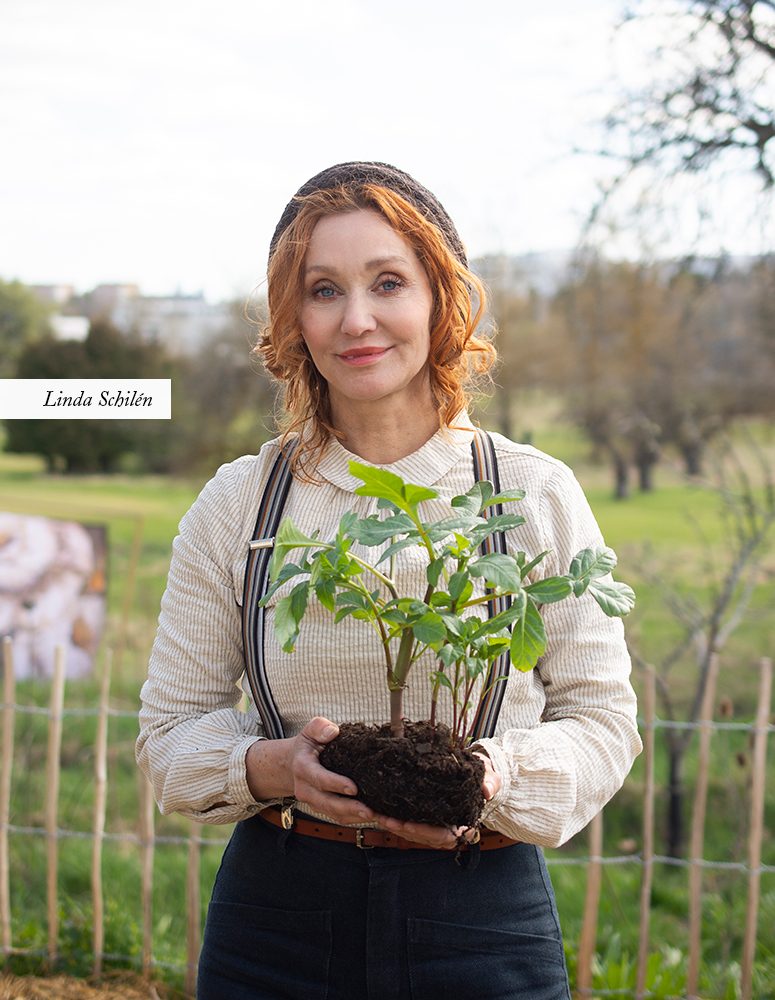Linda Schilén interprets LINUM.
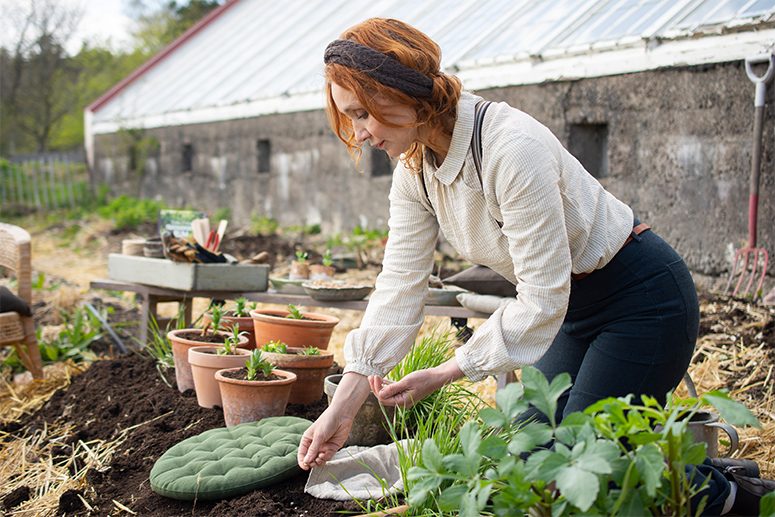
“You can really tell it’s dry,” says Linda, “the earthworms are really deep in the ground.” She uses her spade to look for the perfect spot for the plants that she’s been growing indoors until now. Cultivating plants indoors before putting them outside is a great way to get your harvest started early in a country with a short growing season. In Sweden, frost can stick around all the way into May and anyone who tries to get a head-start on their planting runs the risk of losing plants to frosty nights. She has some dahlias in a basket, a summer flower that has really trended on social media this past year. We’re especially curious about those flowers, and Linda shares with us a few of her top tips for some of Spring’s most important planting weeks.

Dahlias require relatively little effort, but really pay off when they start to bloom. They also come in several varieties (single and double-flowered) that are perfect when making your own, unique bouquet. Tips for successfully growing dahlias:
- Read the bag. The bag includes instructions about when you should start to grow the flower indoors. The amount of time the plant should be cultivated indoors depends on what kind of variety you’re growing, but estimate between 3-5 weeks.
- Grow indoors or in a cold frame greenhouse.
- Snails like dahlias a lot, but if you wait to transplant the flower outside until after the stem has had time to grow, snails won’t be able to eat the whole plant and the flower will be able to grow in peace.
- Dahlia foliage is sensitive to the cold, so it’s essential that you wait until after the nights have warmed up.
- If you’re still worried about frost, you can reuse an old cloth or sheet to cover the dahlias and the seeds.Use sticks to hold up the sheet or cloth over the plants. The plants will then be able to survive under their “tent”.
- Dig up your dahlia’s tubers in the fall and keep them away from frost indoors throughout the winter. Then you can replant the tubers the following year. You can bring them with you year after year and, just like LINUM’s products, they’ll stay with you for generations.
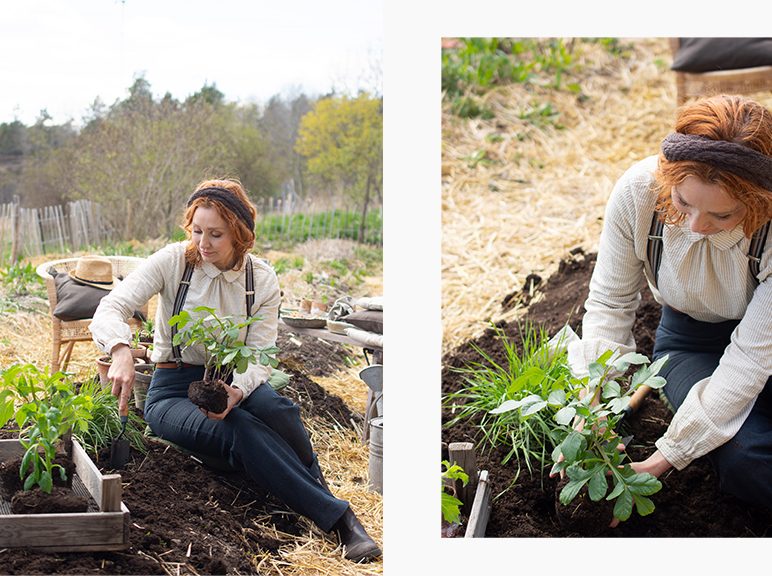
Are you a beginner when it comes to plants? If so, it might be a good idea to test one cultivation method at a time, for example tubers or seeds, etc. That way, you can then practice and master one cultivation method and move on to try another method, and another after that. Remember to grow in reasonable quantities – it should be manageable for you. Are you a more experienced garden enthusiast? If so, check out Linda’s 132 helpful tips for plants and gardens in her latest book.
3 GREAT IDEAS THAT YOU CAN EASILY IMPLEMENT YOURSELF.
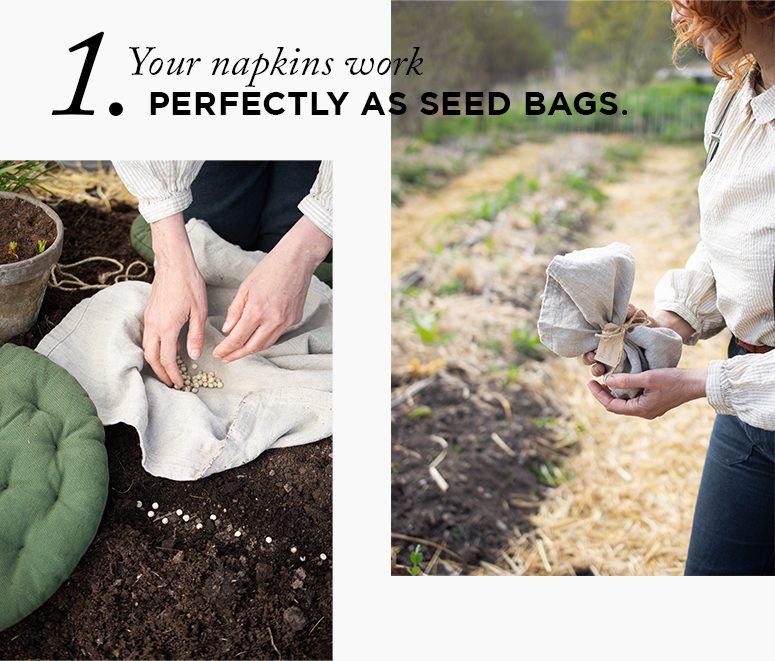
Reuse fabric or old napkins that have seen better days and make a fabric bag out of them. Tie a ribbon around it and put a small label for what seeds are inside and maybe a few instructions for whoever is going to plant the seeds? A seed bag is also a great gift for someone with a green thumb.
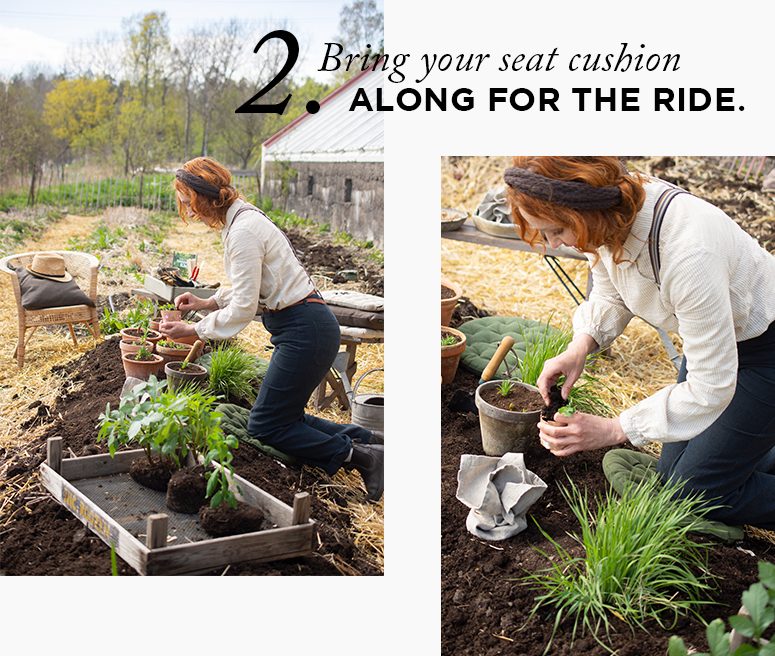
The PEPPER seat cushion is machine washable at 40 degrees, making it the perfect companion, for example, when you’re on your knees weeding and planting. It also works great on a garden chair or a work bench as it stands up to dirt and grime.
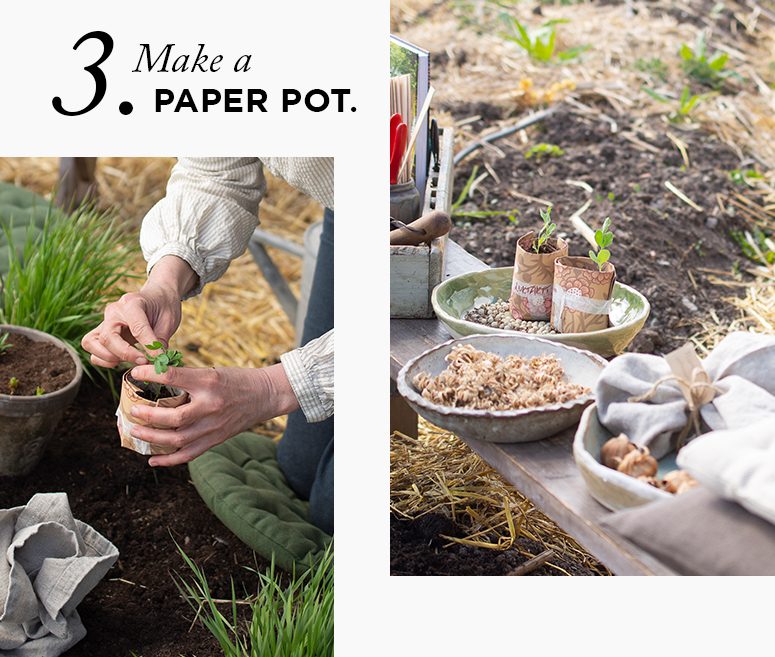
Use beautiful wallpaper, some newspaper or anything else that easily breaks down in nature. By wrapping them around an aluminium can or repurposed plastic bottle, they’ll hold their shape even after the can or bottle is removed. The paper can be planted directly in the ground.
